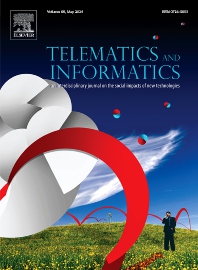Journals in Information systems general
Journals in Information systems general
- ISSN: 1463-5003
Ocean Modelling
Ocean Modelling is an international journal that highlights the significant findings and breakthroughs in all aspects of ocean modelling research to support the advancement of ocean sciences.Ocean Modelling welcomes submissions in various forms of mechanism analysis, laboratory experiments, ocean model development, improvements and applications, as well as model-observation synergies. In particular, ocean model applications at different scales that aim at understanding the ocean and Earth system and its coupling to biological, geological and chemical systems are welcome. Special attention can be also given to interdisciplinary contributions focusing on interactions between physics, biology and chemistry, cross-scale processes, and machine learning.The journal publishes topics including:Models of ocean circulation, surface waves, tides and sea ice, marine ecosystems, biogeochemical processes, sediment processes, and coastal morphology.Earth system models, ocean-atmosphere coupled models, and climate models with a special emphasis on the role of the ocean.Innovative modelling, combined with observational, theoretical studies concerning physical and biogeochemical processes in different time and space scales.Technologies associated with ocean model development, (e.g., model framework, coupler, data assimilation, high-performance computing, and artificial intelligence).Simula... prediction and response strategy of ocean and climate disasters like tsunamis, flooding, volcano eruptions, float stone, marine heat waves, oil spill movements, etc.Improved understanding of the variability in the ocean and its past, present and future role in the wider climate system using models and observations.Topical Collections will be envisaged for timely topics, related to ocean modelling, to promote key advances in specific research areas in ocean modelling and to bring together high-quality contributions in the collection's domain. Ocean Modelling welcome submissions to the 3 ongoing Topical Collections: Cross-Scale Processes in Ocean Modelling, Artificial Intelligence (AI) Methods and Applications for Ocean Modelling, Advancements in Earth System Modelling with Ocean Components.Ocean Modelling publishes 12 issues per year with 4 categories of articles, including:1. Research Papers form the core of the journal, with a typical length of 6000 words and a maximum of 10000 words.2. Reviews are between 8000 and 20000 words, on topics cross traditional lines.3. Short Communications are short research papers, with a typical length of 2000 words, and a maximum of 5000 words, 3 Figures or Tables.4. Perspective papers discuss about subjective positions, viewpoints or new concepts within less than 2000 words.
- ISSN: 2772-9419
Systems and Soft Computing
Official Journal of the World Federation on Soft Computing (WFSC)Systems and Soft Computing (SASC), a companion title to Applied Soft Computing, is an open access journal, promoting original soft computing research. SASC will focus primarily on the methodology and application of soft computing in real-world systems. Areas of interest include but are not limited to the following within soft computing/computatio... intelligence: fuzzy logic, neural networks, and evolutionary & bio-inspired computation. Other areas of interest that can be applied in today's world will also be accepted, such as learning theory, probability theory, hybrid methods, and rough sets. The applications of soft computing methods/techniques in computer science, engineering, manufacturing, supply chain, logistics, bio-medicine, healthcare, data analysis, and big data analytics are also welcome.The journal will disseminate full length as well as short and concise papers of the highest quality. While the journal welcomes all article types, including full-length original research articles, the breadth of the journal will consist of communication-type papers. These articles, typically 8-9 pages in length, will help influence a rapid review process and dissemination of content. SASC is a fit for authors who have timely research and/or prefer to publish in a fully open access journal.
- ISSN: 0736-5853
Telematics and Informatics
An Interdisciplinary Journal on the Social Impacts of New TechnologiesTelemati... and Informatics is an interdisciplinary journal publishing innovative theoretical and methodological research on the social, economic, geographic, political, and cultural impacts of digital technologies. Application areas include smart cities, sensors and information fusion, the digital society and digital platforms, internet of things (IoT), cyber-physical technologies, privacy, knowledge management, distributed work, emergency response and hazards, mobile and wireless communications, health informatics, psychosocial effects of social media, ICT for sustainable development, blockchain, e-commerce, and e-government.The Journal favors research papers (8,000 words) but will consider contributions offering systematic review and meta-analysis (10,000 words), as well as research notes (4,000 words) that seek to advance new ideas, theoretical perspectives or methodological approaches.Telematic... and Informatics serves as an international outlet for information scientists, data scientists, computer scientists, social informaticists, geographic information scientists, urban and regional planners, policy analysts, regional scientists, disaster scientists, and network scientists.Benefits to authors We also provide many author benefits, such as free PDFs, a liberal copyright policy, special discounts on Elsevier publications and much more. Please click here for more information on our author services.Please see our Guide for Authors for information on article submission. If you require any further information or help, please visit our Support Center